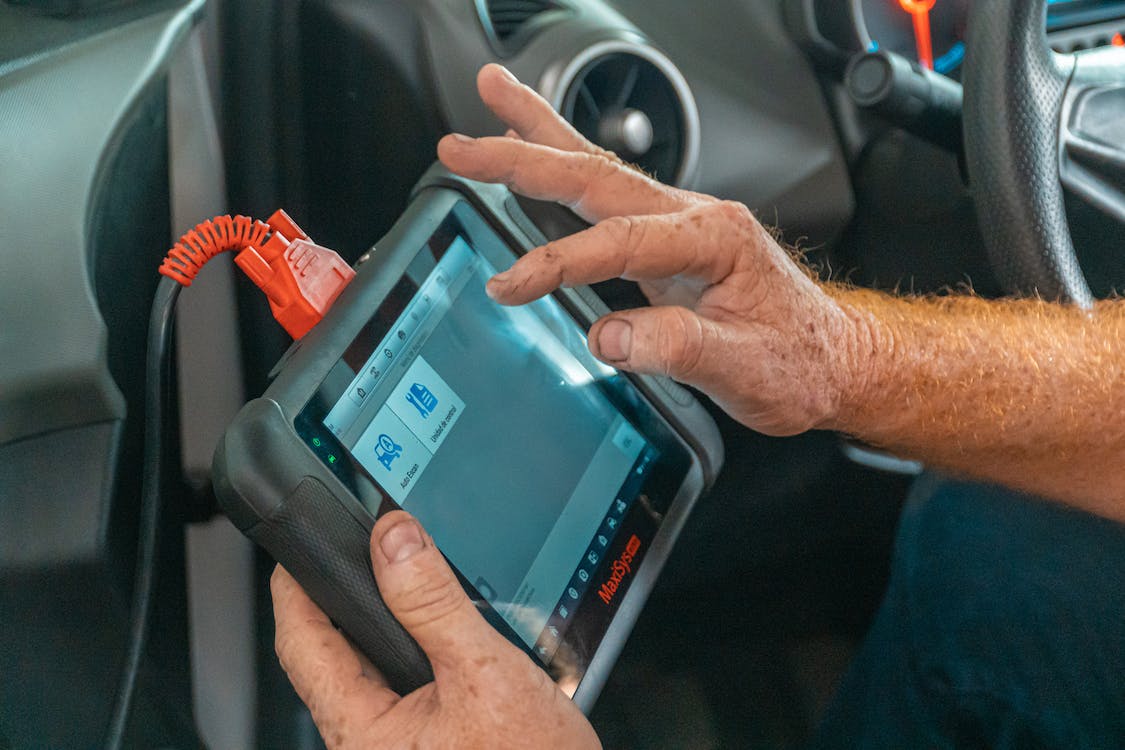OBD (On Board Diagnostic) is an anti-pollution protocol used in the USA; it is an on-board pollution monitoring system integrated into the engine management system; it is standardized and common to all brands; its derivative in Europe is EOBD (European On Board Diagnostic).
Here’s where we stand.
History of OBD
OBD has several key dates:
1991: application of OBD I in the USA for gasoline vehicles;
1996: application of OBD II in the USA for gasoline vehicles;
2001: application of EOBD in Europe for 2001 series gasoline vehicles, with the Euro III standard;
2004: application of EOBD in Europe for 2004 production of diesel vehicles.
Features of EOBD
As described above, it is based on the OBD II system of the State of California; it is part of the engine electronics. Its function is to monitor the proper functioning of the engine components that affect pollution.
To do this, it carries out checks, on the one hand, on the efficiency of the sensors and actuators, and on the other hand, rational checks on defined operating values with a predetermined threshold (for example, the value of the “lambda”, i.e., the ratio between the effective air mass admitted during combustion and the ideal air mass (14.8 g air for 1 g of petrol); it is equal to 1 for perfect dosage of the petrol engine).
OBD: composition of the system
A pollution control indicator
Also called MIL (Malfunction Indicator Light), the EOBD system activates it for any failure of the anti-pollution system.
The symbol identifying it is yellow and represents an engine block.
A standardized data protocol continuously monitors the efficiency of the catalytic converter or the DPF (Diesel Particulate Filter).
The operation of sensors related to anti-pollution: engine management sensors (TDC sensor, phase sensor, coolant temperature, oxygen sensors or differential pressure sensor (HDI), pressure sensors, flow meter, pedal position sensors, etc.), as well as sensors related to other systems and interacting with the engine function (e.g., wheel sensors for vehicle speed, etc.).
The actuators: these are all the elements controlled by the ECU. They, therefore, receive an electrical signal from the OBD for engine management: injectors, EGR valve, turbocharger pressure control, FAP regeneration, glow plugs, ignition coil (gasoline), fuel pressure regulator, etc.
A diagnostic socket

This is a 16-way interface socket, which allows communication with the various ECUs; it also allows the parameters linked to the EOBD to be checked, the memory of linked faults to be deleted (of course, after the fault(s) has/have been resolved) and therefore the diagnostic light (MIL) on the dashboard to be switched off.
It must be located in the passenger compartment.
Good to know: faults have an alphanumeric code common to all manufacturers called DTC (Data Trouble Cod), allowing them to be identified with any diagnostic tool (e.g., code P0032 means upstream lambda sensor fault).
OBD: the lighting of the warning light
The lighting up of the warning light indicates a fault linked to the anti-pollution system; it is conditioned by a very precise protocol linked to driving cycles (warming up, driving at different speeds and loads, etc.).
Minor or fleeting defect
In this case, if the fault persists during 3 driving cycles, the light comes on.
It goes out after 40 consecutive cycles without fault.
A serious fault that could lead to the destruction of the catalytic converter
If the fault is serious:
The light comes on after 3 driving cycles.
It remains on constantly until the car electrician is called and the fault is cleared with the EOBD controller or the diagnostic device.
If no intervention is carried out, the operation progressively switches to degraded mode (limited speed – cooling fan engaged – limitation of additional functions (air conditioning, etc.) until starting is prohibited).

